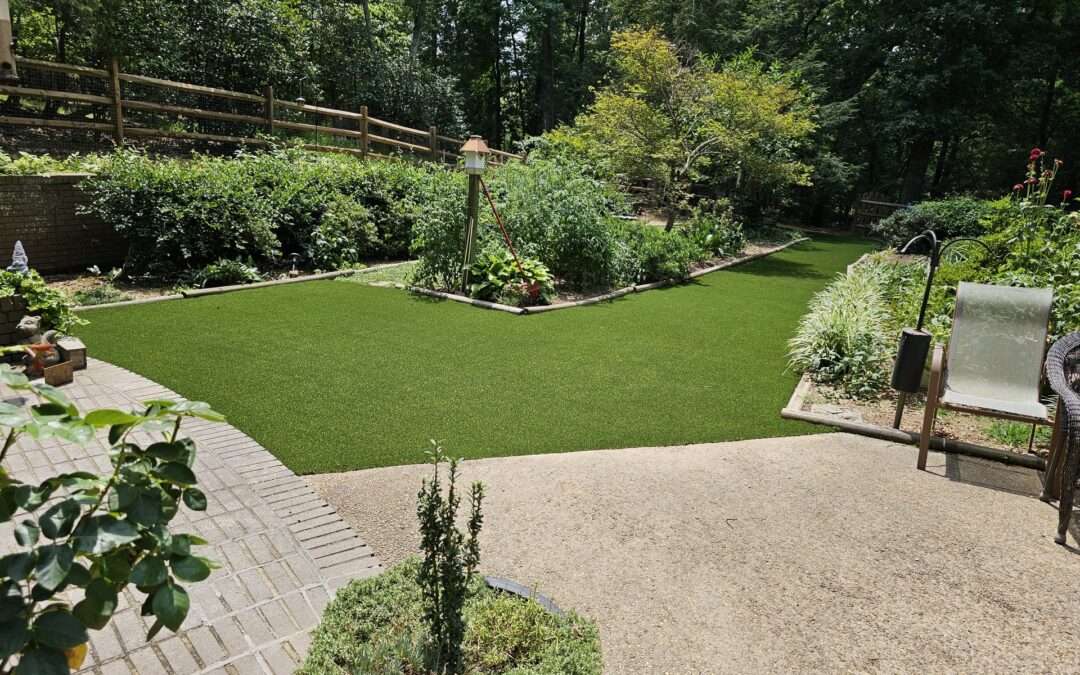Artificial grass has become an increasingly popular alternative to natural lawns, offering a sustainable solution for homeowners, businesses, and sports fields alike. With growing concerns about water conservation, pollution, and climate change, artificial turf presents a viable, eco-friendly option that benefits both the environment and the communities that embrace it. As cities and communities look for ways to reduce their environmental impact, the shift toward artificial grass is becoming an important and effective choice for sustainable landscaping. Below, we explore the key environmental advantages of artificial grass and how it contributes to a greener future.
Water Conservation
One of the most significant environmental benefits of artificial grass is its ability to conserve water. According to the Environmental Protection Agency (EPA), nearly one-third of all residential water use in the United States is dedicated to outdoor irrigation, which amounts to nearly 9 billion gallons of water per day. As global water shortages become an increasing concern, cutting back on unnecessary water use is essential.
With artificial grass, you can:
- Reduce water usage by up to 70%
- Help prevent drought conditions in dry regions
- Lower your monthly water bills
Ideal for Drought-Prone Areas
For areas that frequently experience droughts, artificial turf is a game-changer. It provides a lush, green look year-round without draining local water resources. Additionally, communities in drought-stricken regions are beginning to implement water conservation regulations, making artificial turf a practical and compliant choice for homeowners and businesses looking to maintain attractive landscapes.
Reduction in Harmful Chemicals
Traditional lawns require regular maintenance with fertilizers, pesticides, and herbicides to keep them green and weed-free. Unfortunately, these chemicals:
- Contaminate soil and local waterways, potentially harming marine life
- Harm wildlife and beneficial insects like bees, leading to biodiversity loss
- Pose health risks to children, pets, and individuals with chemical sensitivities
With artificial turf, there’s no need for these harmful substances, reducing the environmental impact and promoting a cleaner, healthier planet. By eliminating the need for chemical applications, artificial grass helps to protect natural ecosystems and prevents toxic runoff that can contaminate drinking water supplies.
Lower Carbon Footprint
Maintaining natural grass lawns requires ongoing upkeep that contributes to greenhouse gas emissions. Consider these facts:
- Gas-powered lawnmowers emit as much pollution in an hour as a car does in 100 miles.
- The use of electric and gas-powered equipment increases carbon emissions, contributing to climate change.
- Fertilizers and soil treatments used in lawn care release nitrous oxide, a potent greenhouse gas.
Artificial Turf Reduces Emissions
Switching to artificial grass eliminates the need for these emissions-heavy practices, significantly reducing your carbon footprint. By avoiding the use of gas-powered lawn equipment, you are directly contributing to cleaner air and a healthier planet.
Waste Reduction & Recycling Benefits
Artificial grass is often made from recycled materials, such as old rubber tires and plastic bottles, diverting waste from landfills. Additionally:
- Many artificial turf products are 100% recyclable at the end of their lifespan.
- The long lifespan (10-20 years) reduces waste from lawn maintenance equipment and supplies.
- The use of recycled materials contributes to a circular economy, helping to repurpose materials that would otherwise contribute to pollution.
The more homeowners and businesses invest in artificial turf, the more manufacturers are encouraged to innovate and increase the amount of sustainable materials used in production.
Prevention of Soil Erosion
Erosion is a common issue in areas with heavy rainfall, slopes, or frequent foot traffic. Traditional grass can wear away, leading to soil displacement and sediment runoff into waterways, which negatively impacts water quality.
Benefits of Artificial Grass for Soil Stability
- Provides a stable ground cover that prevents erosion.
- Ideal for playgrounds, sports fields, and high-traffic areas.
- Keeps landscapes intact even during heavy rains, ensuring that soil remains in place and reducing sediment runoff.
By acting as a protective barrier, artificial grass helps to maintain land integrity, particularly in areas with steep slopes or poor soil stability.
Year-Round Greenery Without Resource Depletion
Natural grass can become dormant, patchy, or brown in extreme weather conditions, requiring additional resources to maintain its lush appearance. It also demands significant reseeding and watering, particularly in hot climates.
With artificial grass:
- Your lawn stays green and vibrant all year without the seasonal decline of natural grass.
- There’s no need for excessive watering, fertilizing, or reseeding, reducing labor and resource consumption.
- You eliminate the environmental burden associated with constant lawn care and restoration efforts.
For homeowners who take pride in maintaining a beautiful lawn, artificial grass provides a visually appealing and sustainable solution that stays pristine in all seasons without the need for continuous maintenance.
Final Thoughts
The shift toward artificial grass is not just about aesthetics—it’s a smart, sustainable choice that helps conserve water, reduce pollution, and minimize carbon emissions. With modern advancements in synthetic turf technology, today’s artificial lawns are more durable, realistic, and eco-friendly than ever before.
By choosing artificial grass, homeowners, businesses, and municipalities can play a role in reducing environmental strain while still enjoying the benefits of lush, green landscapes. The positive environmental impact extends beyond individual properties, contributing to broader sustainability efforts on a global scale.
If you’re looking for an environmentally conscious way to enhance your outdoor space, consider making the switch to artificial grass.
To learn more about high-quality artificial turf solutions, visit Carolina Turf Systems.

